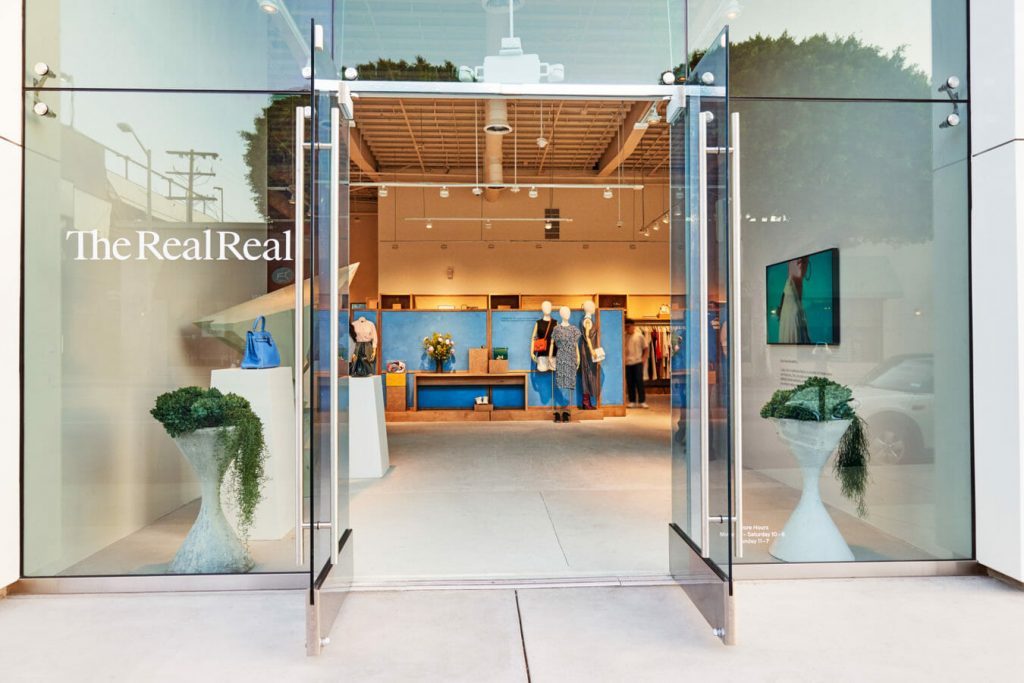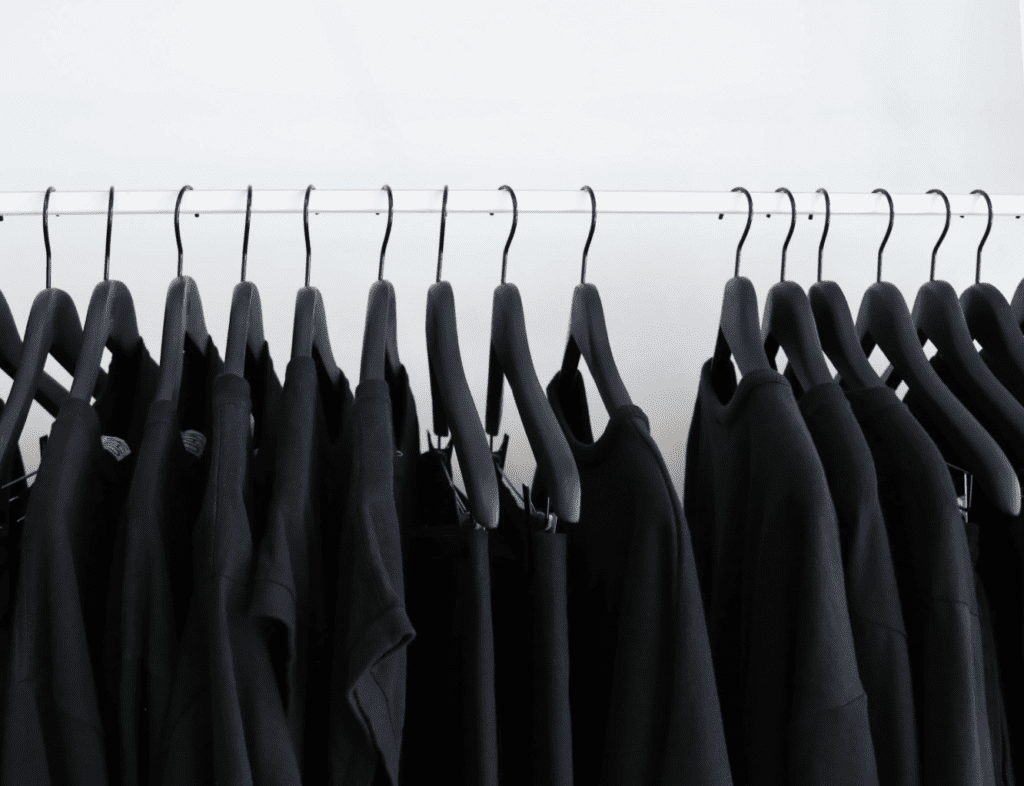The RealReal’s management revealed in the company’s Q2 earnings call last month that it will continue to open new retail stores in the year ahead, saying that they are looking to grow their existing set of 19 stores by “anywhere from one to three stores.” San Francisco-headquartered The RealReal, which has made its name as “the leader in luxury resale” thanks to a seemingly endless supply of Chanel bags, Rolex watches, and high fashion garments, is not the only secondary market company that is currently growing its physical retail footprint; the likes of Rebag, Fashionphile, and Privè Porter, among others – all of which initially launched as digitally-native businesses – have opened brick-and-mortar outposts in furtherance of a segment-wide effort to expand beyond e-commerce or in Privè Porter’s case, beyond Instagram and WhatsApp.
Across the board, consumer goods brands benefit from maintaining brick-and-mortar stores, where consumers generally spend more money per transaction (compared to e-commerce), for example, and where return rates are uniformly lower. At the same time, stores tend to be an effective – and cost-efficient – driver of new customer acquisition. (For some broader perspective: Formerly dependent on e-commerce sales and online advertising exclusively, Warby Parker revealed last fall that its retail stores serve as “valuable marketing vehicles for introducing new customers to our brand and driving repeat purchases and, in turn, positively impact our sales retention rate.” The eyewear brand boasted nearly 170 stores as of May, with plans for more openings this year.)
While the same is true in the secondary market, the benefits that come with brick-and-mortar expansion are somewhat more nuanced when it comes to fashion and luxury resale.
For one thing, the operation of brick-and-mortar stores can serve as a much-needed way for resale companies to amass stock. As The RealReal, which began opening permanent retail stores in 2017 by way of a 6,000-square-foot space in New York, has consistently stated, its stores are not just a way to “drive new traffic” or generate sales but to accumulate pre-owned products from consignors to offer up to consumers. In an earnings call last November, the company’s management asserted that its stores are a “cost effective channel for securing supply,” and frankly, a “big win,” as the volume of drop-offs of pre-owned products to stores is topped only by at-home visits by the company to consignors’ homes.
On the supply side, NASDAQ-traded The RealReal says that roughly 30 percent of its consignors “continue to come in from stores.” As for demand, the company’s management contends that just like traditional retail outlets, sales are higher and returns are lower in a brick-and-mortar setting than online. At the same time, TRR’s founder and former CEO Julie Wainwright revealed last year that “in the past, the average order in stores [has been] about two times greater than when [a customer shops] online” and said she believed that was continuing to hold true.
Using stores to increase revenue is also at the heart of Rebag’s growing push into brick-and-mortar – but there is a trust-building twist for the New York-based luxury handbag-focused resale company. Rebag founder and CEO Charles Gorra told TechCrunch last year that the average ticket for its products is roughly $2,000. “So, when you spend that kind of money,” he says, “you want to build trust” with the company you are buying from. Rebag appears to be looking to traditional retail formats – complete with an “experience that fuses transparency and flexibility with personalized services” – to help it to build that relationship with consumers, currently boasting 10 stores, including its recently-opened outpost in Sawgrass Mills, its third store in Florida. Not stopping now, the company, which raised $35 million in a Series E round in December 2021, is planning for more brick-and-mortar openings that will take the form of “both standalone stores, as well as a continued presence in major luxury malls.”
Now take Rebag’s average ticket and multiply it almost 20 times and you have Privè Porter, which opened its first retail store in Miami’s Brickell City Centre in November 2020. In addition to helping to prove that their Hermès-exclusive model can scale beyond the Instagram-only business that Michelle Berk started in 2008, co-founder Jeff Berk says that the Birkin and Kelly bag-filled store has resulted in “incremental customers” for the company, “ones who would otherwise be reluctant to make such a huge purchase (our average retail is $35,000) without seeing and touching the bags.” Since the store opened, Berk says that sales have exceeded $12 million – and without any traditional advertising.
And it is obvious, according to Berk, that “new customers who contact us the ‘old way’” – i.e., in Privè Porter’s store – “are empowered to purchase as they are talking to staff at an actual physical store as opposed to someone working from a private office or from home.”
While Privè Porter is profitable and planning to parlay its current brick-and-mortar success into two more stores, one in Dubai that is slated to open in November and another in Las Vegas after that, it is not the case for all secondary market players, which sheds light on a yet another driving force behind retail expansion. For instance, The RealReal – which generated $468 million in sales in 2021 (up 56 percent year-over-year), its full-year losses also grew (up 34 percent to $236 million) – has been working towards profitability, but does not anticipate hitting the mark until 2024.
In addition to driving new foot traffic and enabling it to amass vital stock, The RealReal’s relatively low average order value (“AOV”) is likely playing a role in its quest to expand its fleet of stores. The company’s AOV has been lingering near the $500 mark, amounting to $486 for the three-month quarter ending on June 30, 2022, down 7 percent compared to the same period in 2021. During the first quarter of this year, AOV was $487, an increase of 3 percent year-over-year. Chances are, The RealReal is looking to benefit from the higher prices that consumers are willing to shell out in-store versus online by stocking its growing number of stores – which stretch from New York and Greenwich, Connecticut to Dallas, Texas and Newport Beach – with more expensive offerings, whether that be fine jewelry or barely-used Birkin bags. This is one of the levers that it can pull to help increase its overall AOV, and in turn, move towards profitable growth.
Against the background of its push to achieve profitability, efforts to increase AOV are not an insignificant factor for The RealReal (or other luxury resale players in the field), as without growing the average value of orders, it is difficult to imagine any amount of cost cutting that would put the company on a profit-making path. (On this point, a luxury executive told TFL recently that in order to achieve profitability and avoid a fate similar to that of the likes of Gilt Groupe, The RealReal likely needs to grow its AOV to $800 or more.) A smattering of physical retail posts across the country – stocked with its most covetable (and expensive) wares – just might help.











